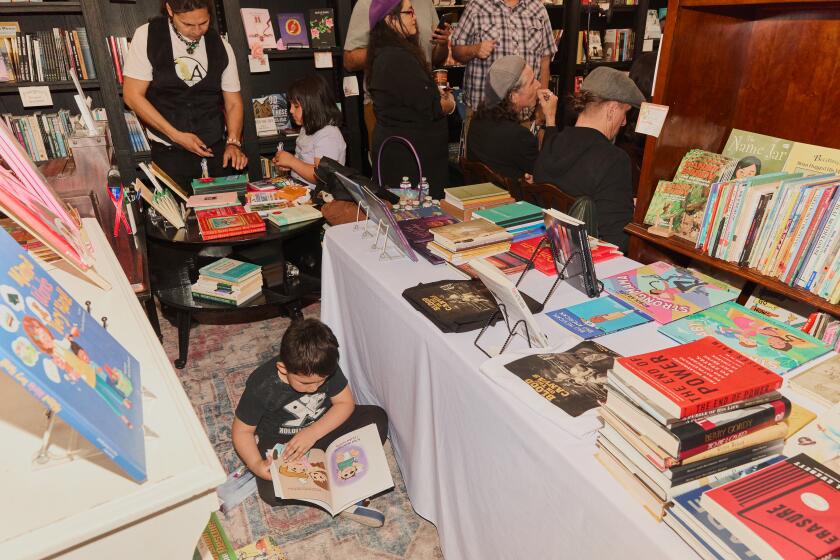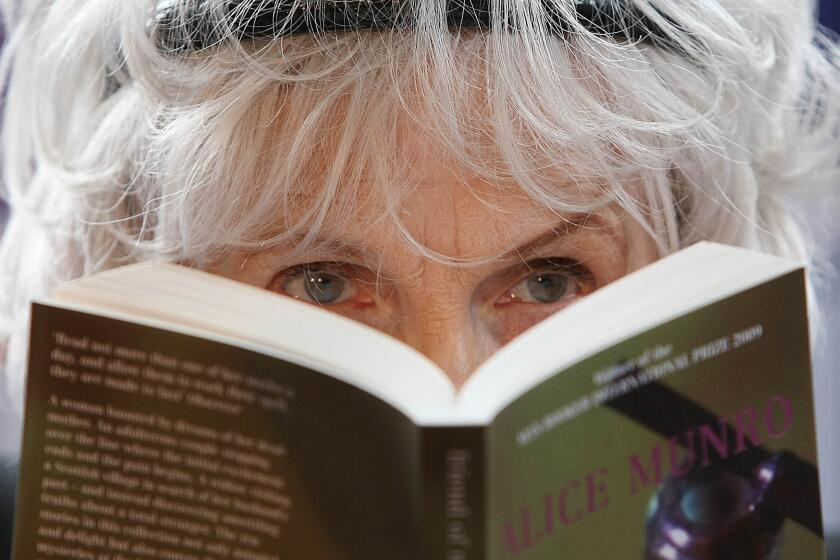An avalanche of cross-purposes
Variations on the discomfiture of innocents abroad have haunted and enriched Anglo-Saxon literature since Henry James sent Isabel Archer into the wrong marriage in Florence and Mark Twain had his naive travelers in Corsica marvel as the guide showed them the skull of Napoleon and his skull as a child. Edith Wharton took poor Lily Bart back to New York so marinated in European manners she was no longer fit for America and had no recourse but to poison herself. Nancy Mitford wrote great comedy in her Paris novels, which revolved around embassies, adultery and the use of bidets, but then she was English -- as is Peter Mayle, who had to flee the south of France after he’d nailed local customs in “A Year in Provence.”
Diane Johnson has now written the third of her French novels opposing a crisp but humble American worldview against the cobweb of traditions, greed and rules that makes up the French one. “L’Affaire” comes after “Le Mariage,” which followed “Le Divorce.” The affaire in question is not a carnal one but rather what the French mean by the word: a scandal, a large-scale situation -- like Dreyfus (politics) or the Bokassa diamonds (money). A love affair, on the other hand, is une histoire -- a story, or, when it’s over, a history.
The opening of “L’Affaire” is as opaque and indistinct as the alpine whiteout in which Amy Hawkins is attempting to ski, unaware that an avalanche is at that very moment burying two people from her chic French resort hotel. Its end is as opaque and indistinct as the long-term affair on which she is about to embark. The multiple possible reasons for the avalanche make up the kernel of the affaire: Was it vibrations from U.S. warplanes flying illegally low? Was it a religious apparition? The author deftly sets in motion a pitched melee between pragmatism, superstition, prejudice, xenophobia and kindness.
It also is a novel of ideas -- here the conflict between altruism and self-interest. Guess which nation represents which.
Amy helped start a Palo Alto dot-com; her contribution consisted of $10,000 and good organizational skills, based on an MBA and two years of law school. Now that the dot-com has been sold, she has mega-millions. Having overheard in a Seattle antiques shop that young people know nothing about the finer points of life, want everything shiny and can’t set a table, she resolves to perfect herself before beginning a life of good works. Apart from being a generally bland and well-disposed young woman with a braid down her back and a hankering to learn how Frenchwomen tie their scarves -- one of those tropes of girl lit I could do without -- she is under the spell of Prince Peter Kropotkin, the Russian anarchist whose 1902 manifesto, “Mutual Aid,” is her bedside text. She would like to start a foundation to publish and disseminate his works and place a copy in every bedside table of every hotel room, like the Gideon Bible. Her belief in “Mutual Aid” is religious and superstitious: “Good fortune can only pull you along with it for so long before you start to feel you should keep making little deposits, to keep a minimum balance of deserving.” She wants only to do good, which will get her into trouble. Bread cast upon the waters generally comes back soggy.
Her mother’s friend Geraldine Chastine is finding her a Paris apartment. The girlfriends who were coming with her on the trip have dropped out, and Amy is alone at the Hotel Croix d’Or in Valmeri, where she is seen as “an unattached, very rich American girl, something about an electronics fortune or anyway some commodity more ephemeral than the classical sources of American fortunes, like timber, railroads, or oil.” Throughout, the French and Americans doggedly view one another through the lens of the 19th century, dot-coms and warplanes notwithstanding. The tone is the careful, appreciative one of a wide-eyed traveler, a slightly clumsy politeness in the face of all events.
The two victims of the avalanche are Adrian Venn, a British publisher in his 70s who is all but dead, and Kerry, his much younger American wife, who is in a coma but expected to recover. Kerry’s 14-year-old brother, Kip, is at the hotel, as is her infant son, Harry. In London, Venn’s first wife, Pamela, and their two grown children, Rupert and Posy, are informed of the accident. Pamela’s apartment is acutely described in two sentences: “An English scene of mingled elegance and penury. Cruciferous cooking smells.” Venn’s business manager turns up from a town in the south of France where Venn has his vineyard and his publishing house and brings Rupert there to empty the safe-deposit box before Venn dies. It wouldn’t be a Diane Johnson book without a painting, this time a small Bonnard, important only as it figures into the inheritance. In Paris, Geraldine is alarmed by news of the accident: Venn is the secret father of her own daughter Victoire. She dispatches Victoire’s husband, Emile, a handsome, raunchy Tunisian-born intellectual and TV pundit.
And so the cast assembles in Valmeri: a Palo Alto innocent who just wants to learn about the good life, a 14-year-old boy, a toddler, a London bond trader and his bad-tempered wench of a sister, a seductive intellectual, an Austrian baron in real estate, a seedy British poet and a mysterious American called Joe. The intellectual loathes all Americans, the baron wants to sell Amy a chalet, the wench falls into bed, the teenager does what 14-year-olds do and gets lost on the slopes. Americans materialize on a mission and on snowmobiles. Lawyers arrive to defend varying interests: One is Antoine de Persand, whom readers met in “Le Mariage” (and saw briefly in the film of “Le Divorce”); the other is a Brit called Osworthy. If Venn dies in France, his children will inherit, according to Napoleonic law. If he dies in England, his new wife will inherit.
L’affaire of the avalanche is political and religious; l’affaire of the Venns is entirely about the legalities of succession and legitimacy. Amy, determined to do good, pays for a plane to carry Venn and his respirator to a hospital in London, which does no good for anyone. Kerry awakens and tells of seeing a woman in silver armor on a crest above them just before the avalanche, and the country falls into a Joan of Arc frenzy.
With a witty focus on Amy’s interest in the finer points of life, Johnson keeps skiing, cooking, French lessons and a tempting display of antique tablecloths at the forefront as the story unfolds. In the middle section of her book, the author pulls off a tour de force: keeping a huge cast of characters in motion, each with a different agenda and a different worldview. She whips up an international confection in which each flavor remains distinct, the comedy high, the suspense sharp. Even if the delightful souffle falls a little at the end, Johnson’s canny playfulness keeps things fun. *
More to Read
Sign up for our Book Club newsletter
Get the latest news, events and more from the Los Angeles Times Book Club, and help us get L.A. reading and talking.
You may occasionally receive promotional content from the Los Angeles Times.






